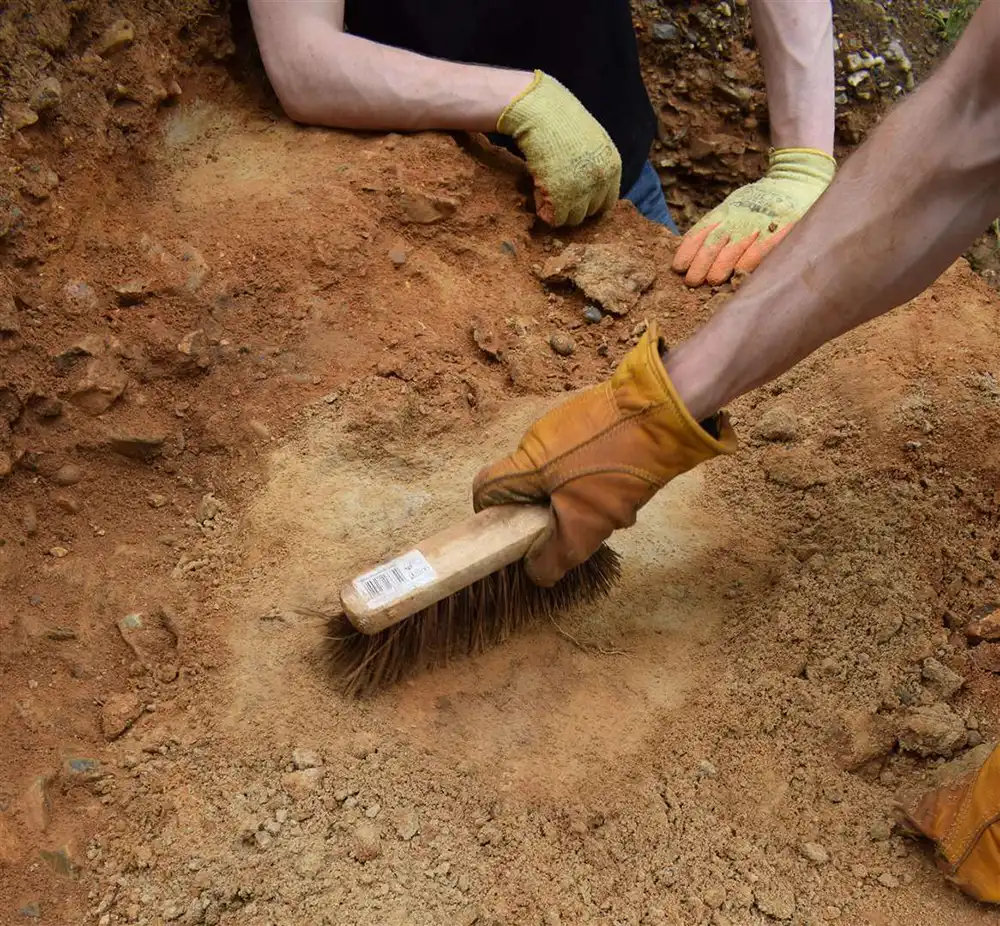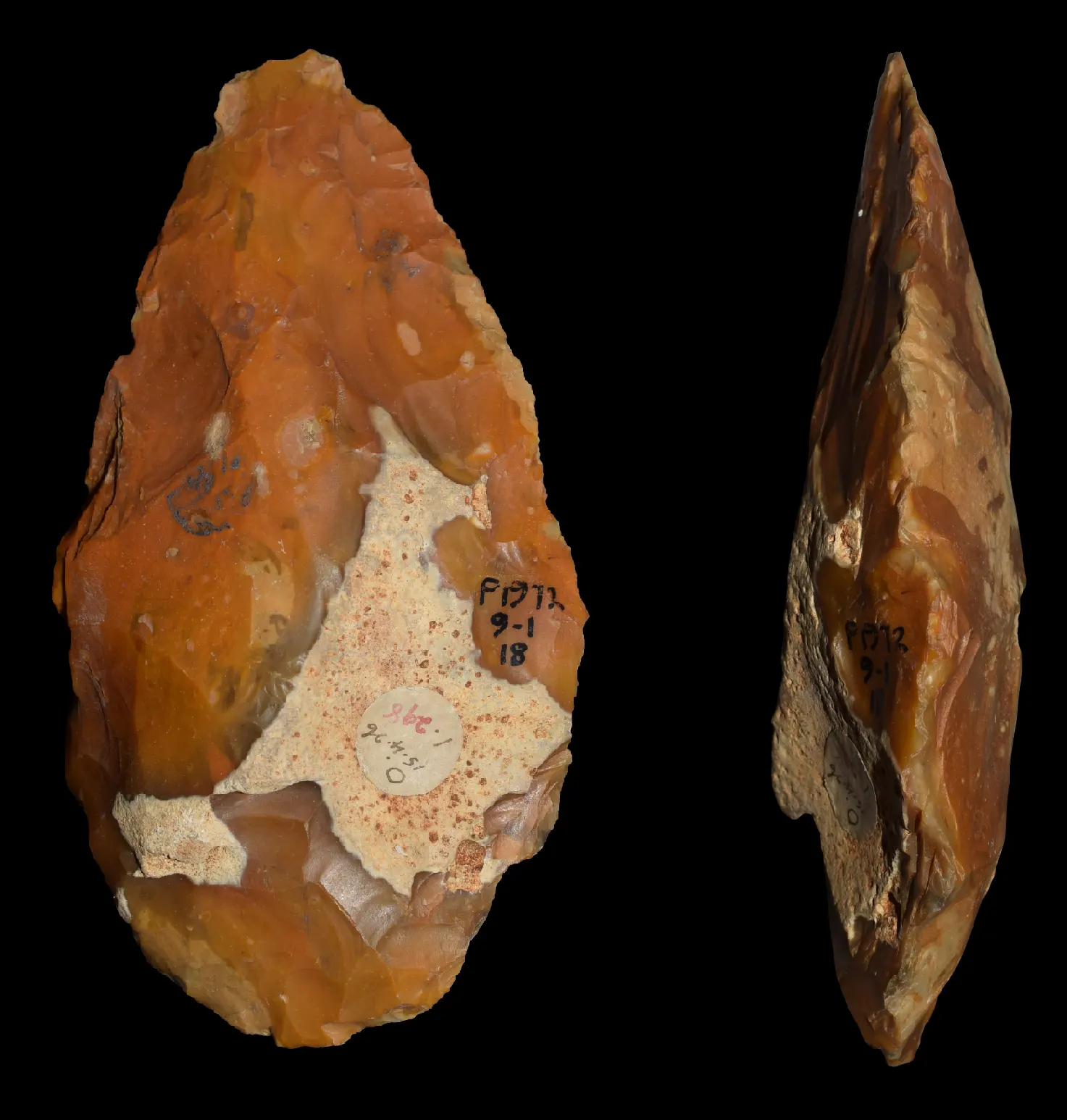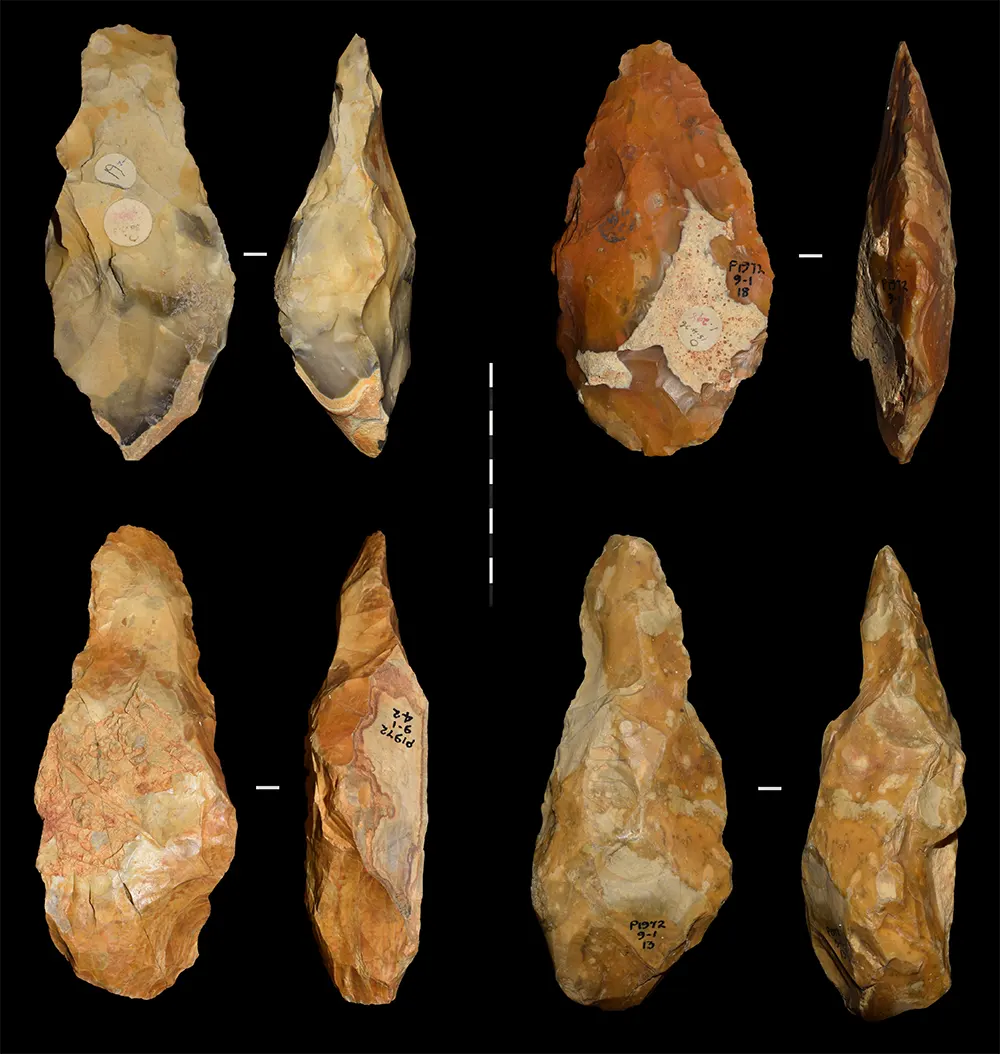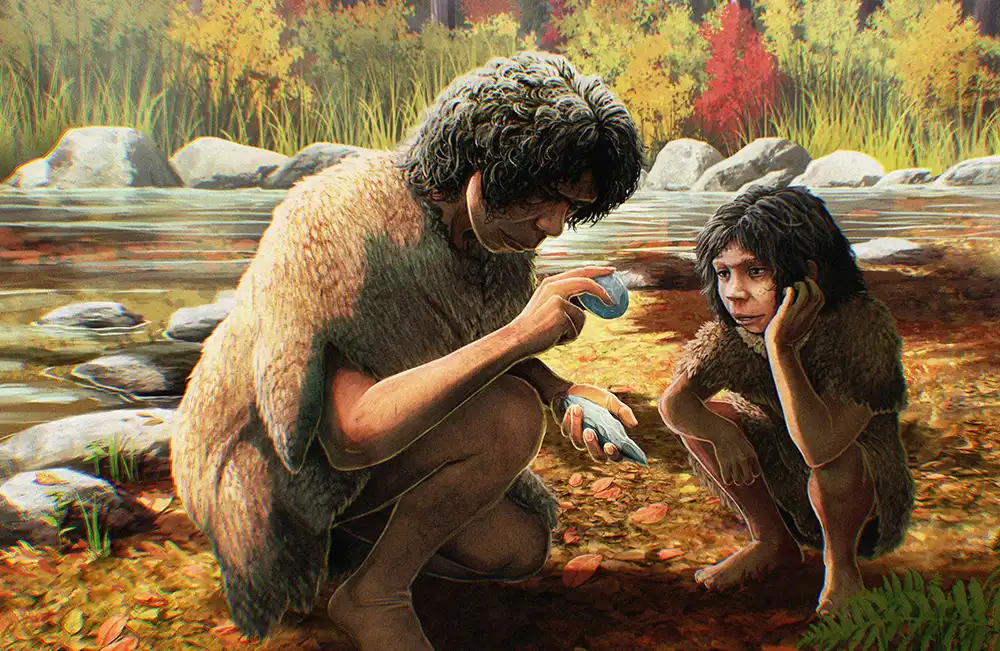Archaeology
Archaeological evidence of early humans
Research by archaeologists at several sites across Old Park & Chequers Wood has confirmed the presence of early humans in this part of southern Britain between 560,000 and 620,000 years ago. This means that the area is the oldest excavatable site of human habitation in the country and around the third oldest in Europe.
The discoveries were made at archaeological sites in Old Park and Chequers Wood after Palaeolithic stone tool artefacts were first uncovered there. Despite their long-known presence it is only now that researchers have undertaken controlled excavations and radiometric dating of the site. The new discoveries confirm that Homo heidelbergensis occupied southern Britain during this time and give tantalizing evidence of animal hide processing at an early point in European prehistory.
Early humans are known to have been present in Britain from as early as 840,000, and potentially 950,000 years ago, but these early visits were fleeting. Cold glacial periods repeatedly drove populations out of northern Europe, and until now there was only limited evidence of Britain being re-colonised during the warm period between 560,000 and 620,000 years before present. A special feature of this site is that the artefacts come from contexts where they can be accurately dated.
The archaeological site, located in an ancient riverbed, was originally discovered in the 1920s but it took a century for excavations to be undertaken and its age to be determined. Led by the University of Cambridge’s Department of Archaeology, the recent excavations have not only dated the original site but have also identified hundreds of new stone tool artefacts. “The diversity of tools now known is fantastic. Not only are there some of the earliest handaxes in Britain, but for the first time the site is revealing evidence of scraping and piercing implements at this very early age”, stated Dr Alastair Key, who directed the excavation.
Homo heidelbergensis was a hunter gatherer known to eat diverse animal and plant foods, meaning that many of the tools would have been used to process animal carcasses, tubers, and other plants. Evidence of this can be seen in the sharp-edged flake and handaxe tools present at the site. The presence of scraping and piercing implements, however, suggests that other behaviours were being undertaken. “Scrapers are the hallmark of hide preparation in the Palaeolithic. If you see stone scraping implements, then there is a very good chance that people were preparing animal hides for clothing, shelters or carrying utensils of some kind”. Says Dr Tomos Proffit from the Max Planck Institute, who analysed the artefacts.
At the time, Britain was not an island but instead represented the north-western peninsular of the European continent. This allowed individuals to move around a much larger landscape than the current Kent coastline allows, with the site potentially only being visited during warmer summer months. “There is so much left to discover about these populations” stated Dr Matthew Skinner who helped lead the excavation, “If they were making clothing – which would be fascinating at this time period– then potentially they could have stayed here all year long’.
Further work at the site is planned and it is expected that additional insights into the behaviour of these early humans will be made.
The archaeological research is, however, under threat from development. The MoD is putting its holding up for sale, including much of the Site of Special Scientific Interest where the archaeological sites are located.
See attached images of hand axes, flint tools, sites of digging and of paleolithic people



